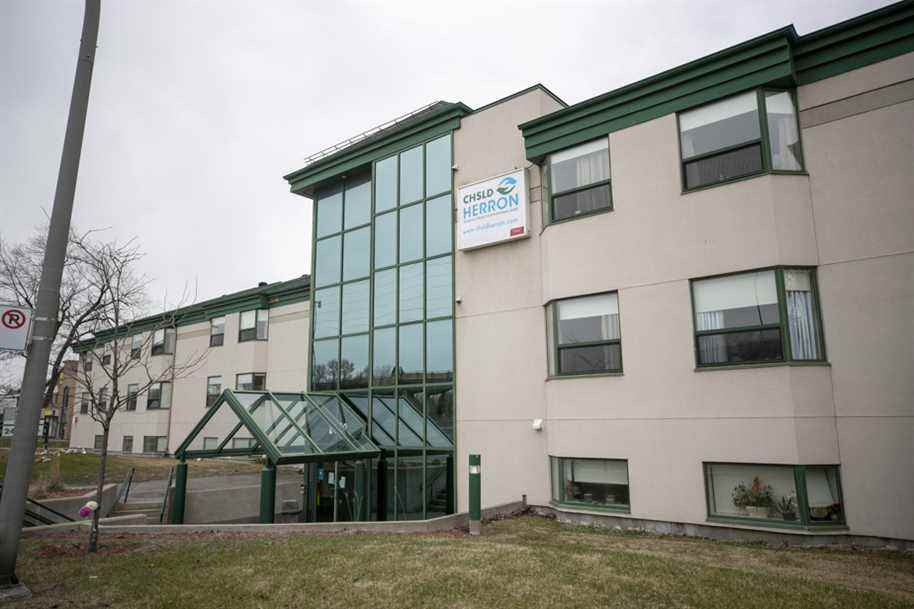The CEO of the CIUSSS-de-l’Ouest-de-l’Île-de-Montréal believes that she should have called the police the evening when 140 seniors were discovered in appalling conditions at the CHSLD Herron, rather than 13 days later as she did.
Her testimony did not prevent Coroner Géhane Kamel from questioning the real reasons which prompted the manager to request a police investigation in the middle of the night on April 11, while CIUSSS teams had been on site since March 29. She also stressed that it was difficult to believe that the CIUSSS had just discovered the existence of about thirty deaths, while its caregivers witnessed them on a daily basis.
On Tuesday, Lynne McVey’s 911 call, hours after the publication of an article by Montreal Gazette revealing the crisis to Herron, was exposed during the public inquiry into the wave of deaths.
“I am calling this evening to declare that we are greatly concerned about a situation in a private CHSLD where we discover several deaths”, we hear Mr.me McVey to the 911 operator. “We are in the process of evaluating all of the residents, and there is some very worrying information which has come to our attention in the last few years.[ères] 10 hours, and we draw the conclusion now […] that we must ask for a police investigation. ”
When the operator asks her how many deaths there have been, she tells him that there have been 31 since March 13. When asked if these deaths are linked to the coronavirus, she says: “Some are linked to the virus, but we are not convinced that all of them are linked to the virus. ”
A few hours earlier, an article by journalist Aaron Derfel, published online on the website of Montreal Gazette, had revealed the crisis to Herron. The journalist compared the establishment to a “concentration camp” where elderly residents had been found soiled and malnourished.
Why at this precise moment?
On the night of April 10 to 11, Deputy Minister Yvan Gendron wrote to Lynne McVey to hear about the situation. He discussed with her the possibility of alerting the police. “For the police, the investigation can begin tomorrow, but you must have informed them to demonstrate your proaction,” reads a text message filed in evidence.
It was 1:29 a.m. when Mme McVey called 911. A dozen homicide, forensic identification and technological crime investigators arrived the following evening.
Why this call, at this precise moment? Especially since the morning, the Deputy CEO of the CIUSSS had a cordial meeting with the owner of Herron, Samantha Chowieri, during which they had agreed to collaborate.
According to the CEO, the CIUSSS discovered on the evening of April 10 that there were about 20 more dead in Herron than had been reported to him. What is wrong is that at least 25 of the 31 deaths occurred after March 29, so after the start of the CIUSSS intervention.
A question of responsibility
Tuesday, during his second testimony at the public inquiry, Mr.me McVey said she had the idea of reaching the police well before April 10. “On March 29, what we found was a collapsed staff. On the 30th, there was no staff coming back. On April 7, she mentioned a possible call to the police in a text message to Deputy Minister Gendron. On the 10th, she also received a disturbing report on medication management. “Should I have called the police on March 29?” Probably. ”
The coroner went there with this statement: “The impression I have is that this call comes because there is a journalist who brews m[erde]. The 31 deaths, that [n’a] it makes no sense that the CIUSSS is not aware of this. ”
“I have an expectation that someone will ask the question. How is it that I have people from the CIUSSS who are in Herron, and that no one has said, between March 29 and now [où on appelle la police, qu’il y a beaucoup de morts] ? Because people saw them die. Why did no one call the doctors to ask them for the portrait? “
If I were the CEO, I might have shocked myself. Eille, I have people on the ground and I don’t have the right information.
Coroner Géhane Kamel
Lynne McVey explained that the managers sent to reinforce Herron were at the bedside because they were so understaffed. They didn’t have time to collect the dead. “It was Herron’s responsibility to do the collection. “
“It was the responsibility of the professionals, no matter where they worked and for whom, there was a collective responsibility that the [décès] are listed, ”replied the coroner.
Herron was the last CHSLD under the coroner’s magnifying glass. Its investigation continues next week with the national component. “What we have heard goes beyond what is humanly acceptable in a society like ours,” she said, referring to the hearings held since last February on the crisis in institutions for the elderly in Quebec.

